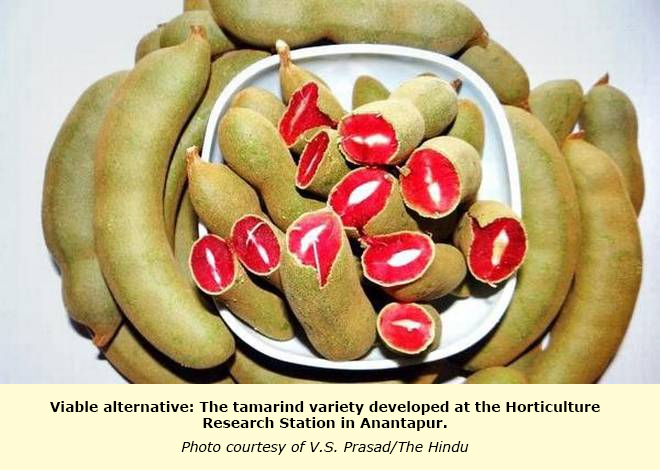The scientists at the Horticulture Research Station here have identified a variety of tamarind with a red coloured pulp which could help the farmers of the State and especially those of the Rayalaseema districts.
Dr. B. Sreenivasulu, senior scientist, told The Hindu that the new variety had a red pulp, which in itself was considerably rare, commercially very viable and a very high-yielding one.

“The red colour of the unripe pods of this tamarind variety is due to the presence of Anthocyanin in the vacuoles. Anthocyanin is a pigment which is naturally water soluble and completely non-toxic,” said Mr. Srinivasulu. The red colour was its biggest commercial advantage.
The starch and oil extracted from the seeds were also widely used in the textile and paint industry, primarily as natural colourants.
“There is also a high potential for the red tamarind as a bio-colourant in the food processing, pharmaceutical, brewery and confectionary industries as a viable replacement to the carcinogenic and inorganic colourants being used currently,” he said.
The new variety would give a yield of six tonnes per hectare compared to the average yield of other varieties pegged at around 3.2 tonnes per hectare. Even the pod size was higher at 12.7 grams per pod.
Drought-resistant
Tamarind — Tamarindus Indica — is a native crop and highly drought resistant. Given the wide cover in all the Rayalaseema districts, the crop could be a veritable blessing for the debt-ridden farmers who, after years of failure of groundnut, can look at a fair yearly income from relatively lesser investment.
Written by V.K. Rakesh Reddy, The Hindu
Source: The Hindu
